The Section 106 process was created to ensure that federal agencies consider historic properties in the planning process for projects they sponsor.
Historic properties are those resources listed in or eligible for listing in the National Register. Federal agencies or their applicants deliberate and document consideration of alternatives to avoid or minimize adverse effects during project planning.
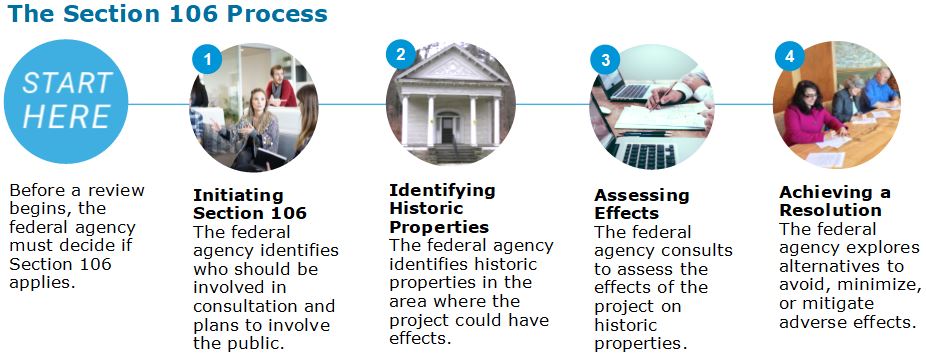
While the process is meant to encourage historic preservation, it is not always possible to meet the needs of the project and simultaneously preserve a historic property. This is a story of one such project that resulted in the removal of historic buildings but did have public preservation benefits.
DePaul School for the Deaf
As way of background, in 2015, Allegany County contacted the PA SHPO to consult on the demolition of six buildings on the former campus of the DePaul School for the Deaf, located in Mt. Lebanon, Allegheny County.
The campus was built in 1911 by the Catholic Diocese and Sisters of Charity as a residential school for speech- and language-impaired children.
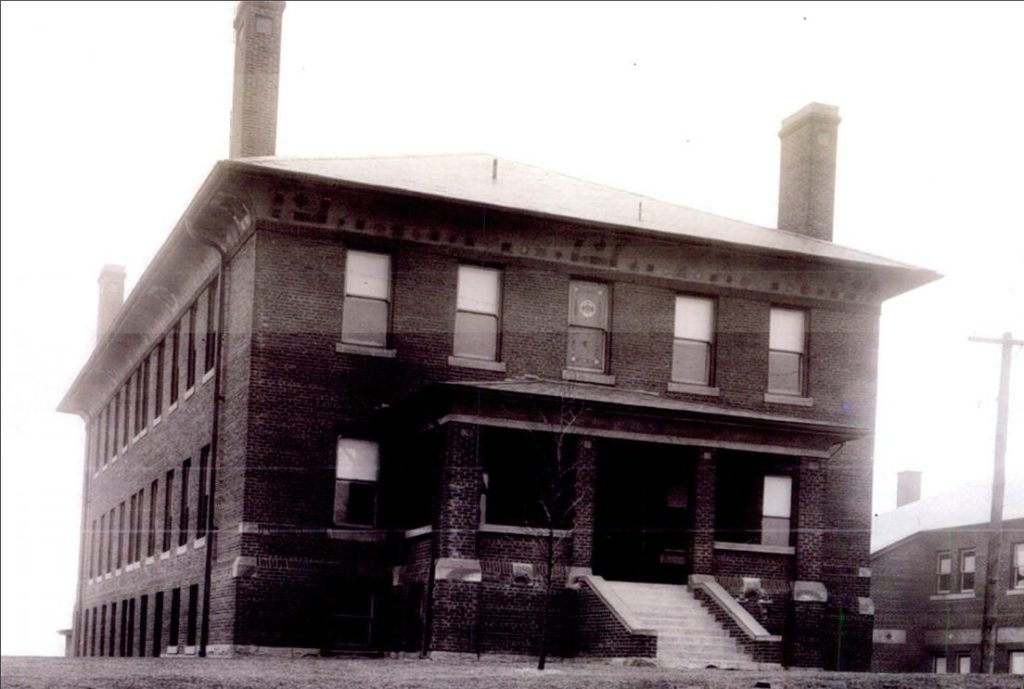
The school was enlarged several times through building campaigns in the 1920s, 1940s, and 1960s. The campus had been vacated by the school in 2002 and remained unoccupied since 2007, resulting in vandalism and deterioration.
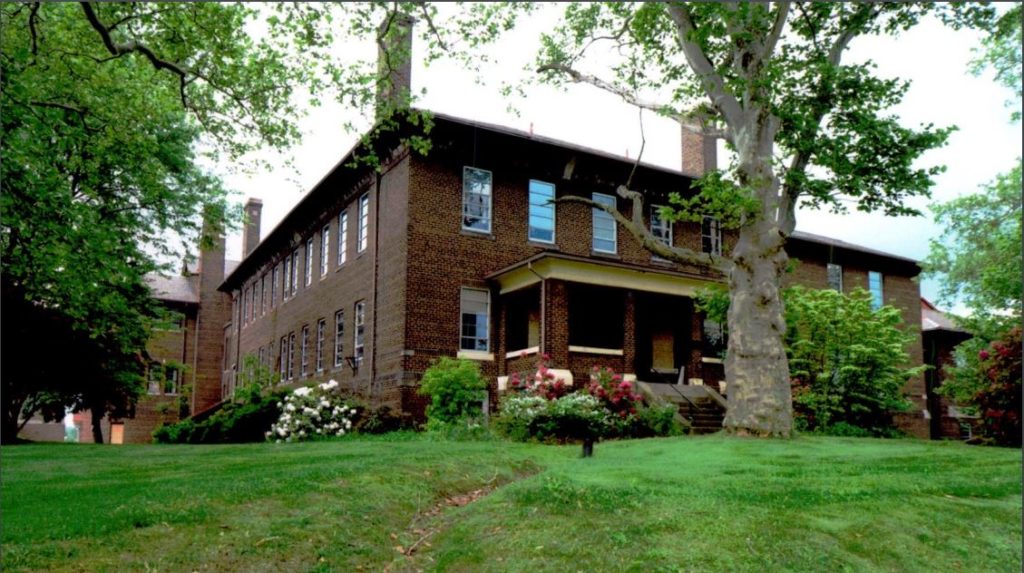
DePaul School campus. Photograph by Charlie Uhl, 2015. 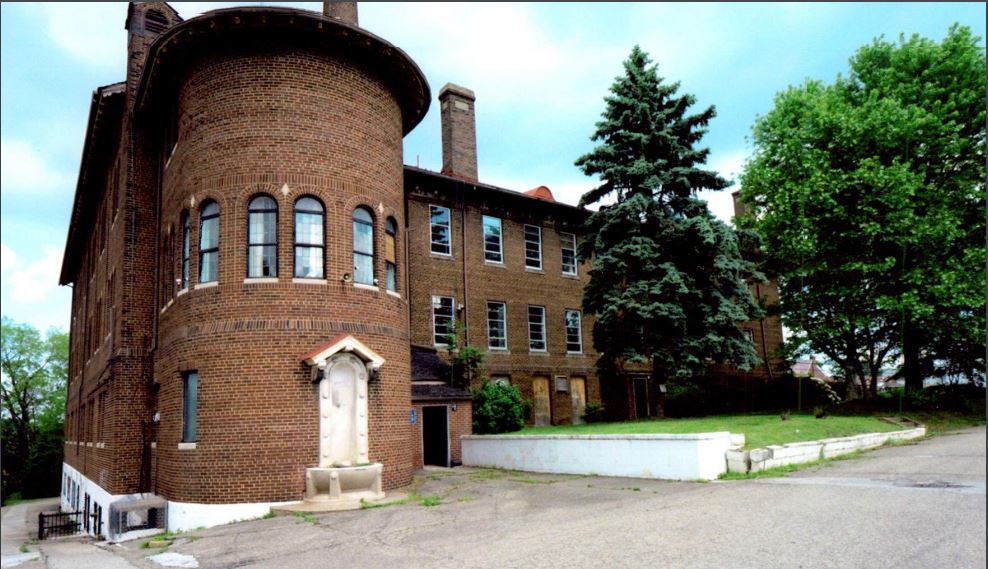
DePaul School Main Building. Photograph by Charlie Uhl, 2015. 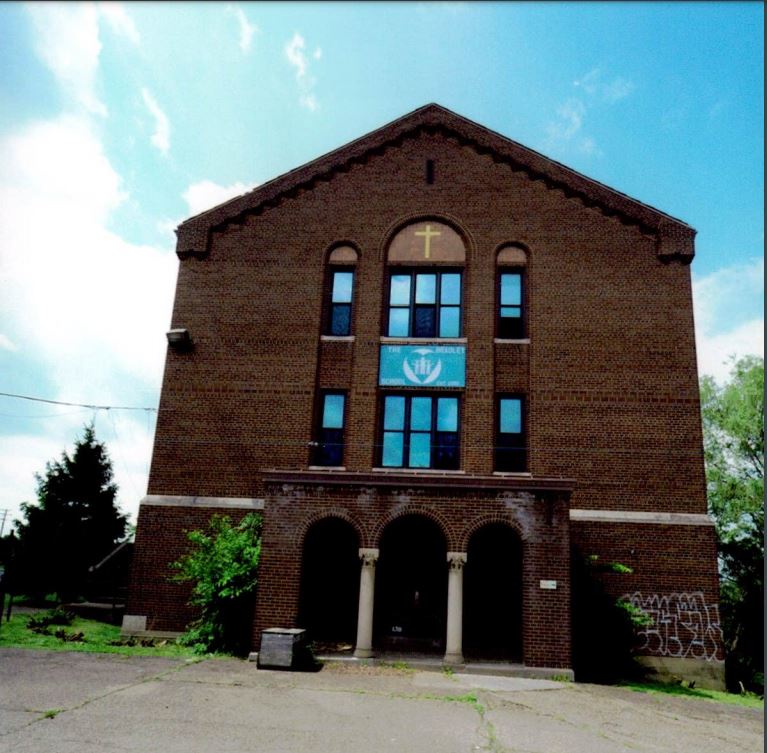
Our Lady of Victory Hall on the DePaul School campus. Photograph by Charlie Uhl, 2015. 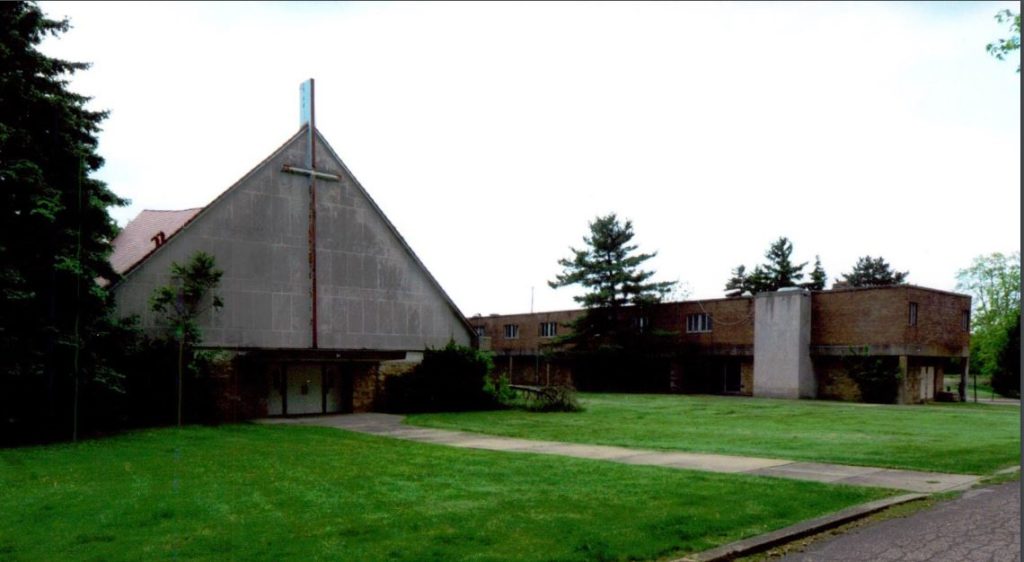
1960s Chapel and Convent on the DePaul School campus. Photograph by Charlie Uhl, 2015.
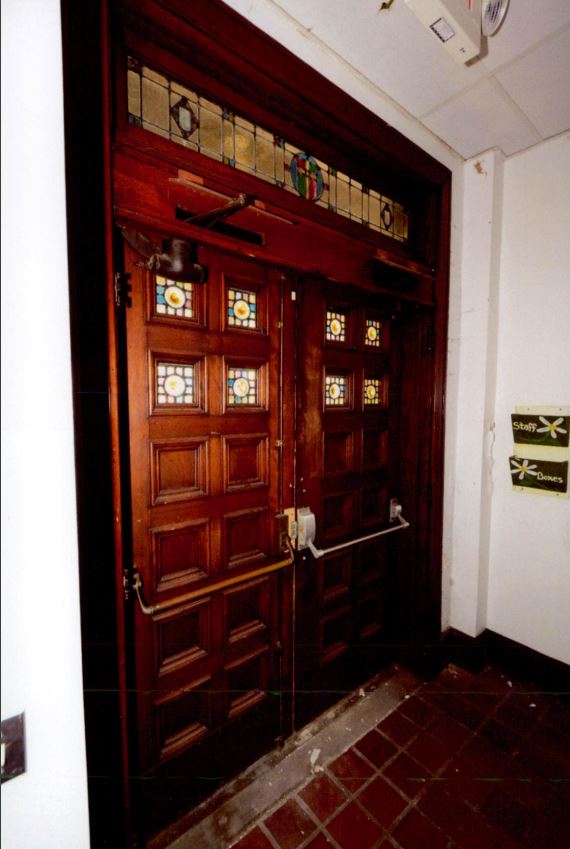
Entrance doors. Photograph by Charlie Uhl, 2015. 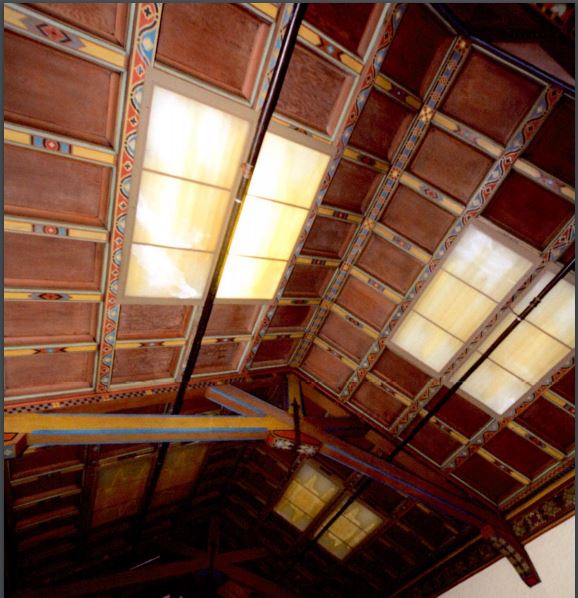
Detail of the 1925 Chapel ceiling. Photograph by Charlie Uhl, 2015. 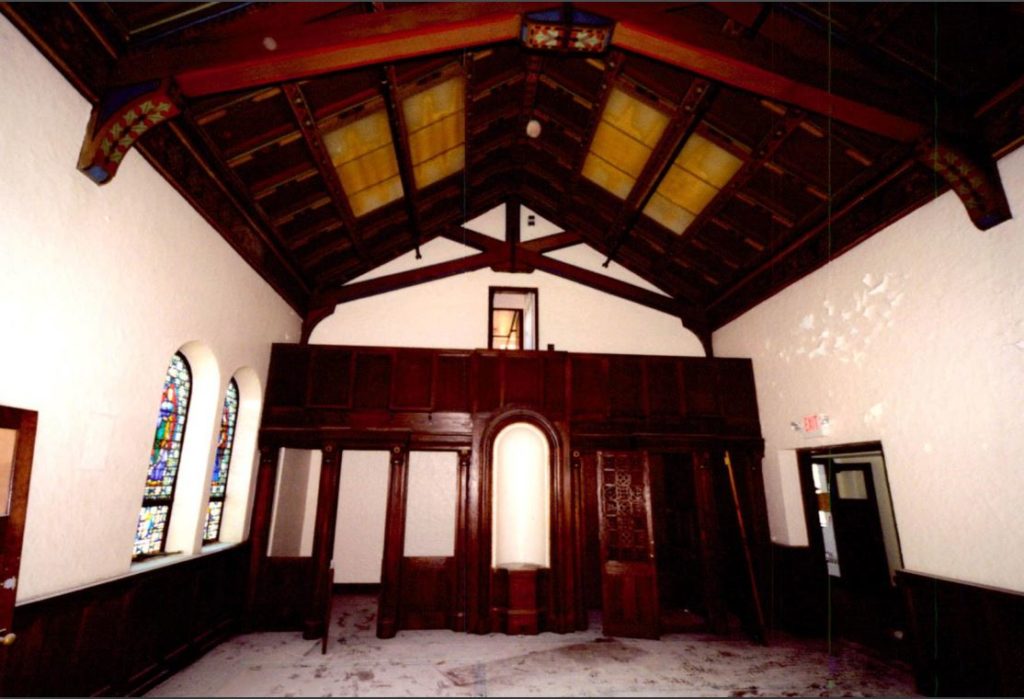
Chapel in 1925 portion of Main Building. Photograph by Charlie Uhl, 2015. 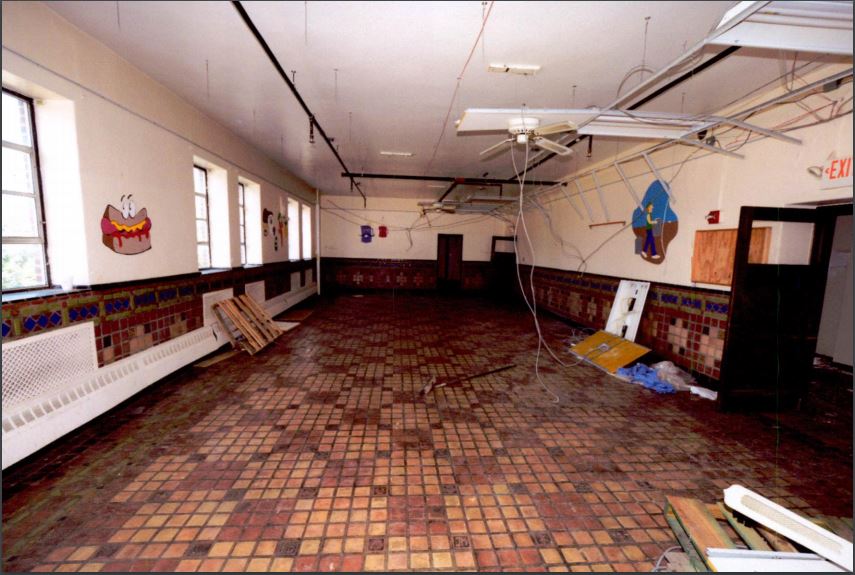
Former dining room with tiled walls and floor. Photograph by Charlie Uhl, 2015. 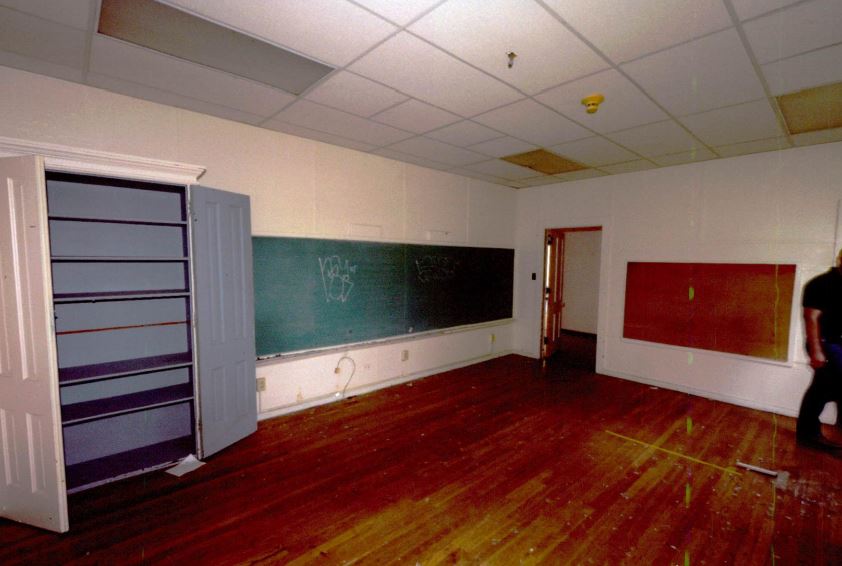
Former classroom for the DePaul School. Photograph by Charlie Uhl, 2015. 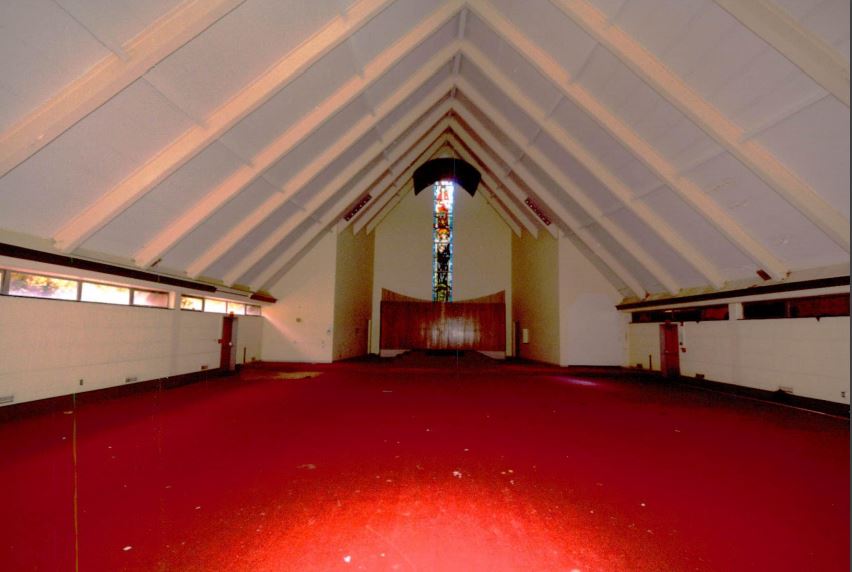
Looking toward alter in the 1960s chapel. Photograph by Charlie Uhl, 2015.
As a part of the Section 106 review, the DePaul School was determined to be eligible for listing in the National Register under Criterion A for education and social history and Criterion C for Moorish and Mid-Century Modern architecture with a period of significance extending from 1911 to 1965.
Consulting Parties
Consulting Parties–local preservation interests–were invited to participate in the discussion including the Mt. Lebanon Historic Preservation Board and the Historical Society of Mt. Lebanon. In 2016, the applicant allowed the consulting parties to tour the property to examine the condition of the buildings as part of the consultation process and consideration of alternatives.
Alternatives to removal were considered and it was decided that the condition of the buildings and cost precluded consideration of rehabilitation and adaptive reuse. Since the project was to result in the removal of six buildings from the complex, it posed the potential for adverse effects. Therefore, it was necessary to reach agreement on appropriate mitigation to resolve adverse effects through consultation with the local consulting parties and our office.
Mitigation
Mitigation is an attempt to provide a public benefit to offset the loss of the historic property. Project mitigation included submission of photographic and written documentation of the complex for inclusion in the SHPO files. In addition, prior to demolition, building elements were salvaged; some were given to the Historical Society of Mt. Lebanon, while others were sold with proceeds going to the Historical Society.
Also, as part of the mitigation, in an effort educate our readers on the Section 106 process and how important it is to get involved in the consultation process, we agreed to publish an article on the consultation process written for Mt. Lebanon Magazine by Susan Fleming Morgans in our blog.
As you read the article, please consider a couple points.
First, if you have vacant properties in your community that you are concerned about, it’s important to let your local government officials and others with preservation interests know. Seek ways to find appropriate uses for these buildings before their condition is so poor that the cost of rehabilitation is prohibitive, and demolition is the only option.
Second, remember Section 106 consultation occurs during the planning phase of a Federally sponsored project, months or years before any construction activity gets started. It is important to pay attention to meetings, news, and stories about plans being developed that could affect historic properties. Make yourself known to project sponsors during the planning phase, indicating why you are interested and ask to participate in the Section 106 process.
The Advisory Council’s “A Citizen’s Guide to Section 106 Review” is an excellent resource for anyone interested in learning more or getting involved.
Standing in the middle of the rubble of what was once DePaul Institute just off McNeilly Road in Mt. Lebanon, it is clear that neglect can ravage a building nearly as completely as a wrecking ball. Paint peels from the walls; the once polished hardwood floors in the classrooms and the intricately inlaid tile floors in the common areas are covered with shards of glass from windows purposely shattered. Foul graffiti screams from the walls…
Written by Susan Fleming Morgans
Read the rest of this 2016 article by Susan Fleming Morgans published in Mt. Lebanon Magazine at https://lebomag.com/what-was-once-beautiful/.
Thank you to Susan Fleming Morgans for and Mt. Lebanon Magazine for permission to publish this article that appeared in Mt. Lebanon Magazine in June 2016.
Comment Policy
PHMC welcomes and encourages topic-related comments on this blog. PHMC reserves the right to remove comments that in PHMC’s discretion do not follow participation guidelines.
Commenters and Comments shall be related to the blog post topic and respectful of others who use this site.
Commenters and Comments shall not: use language that is offensive, inflammatory or provocative (this includes, but is not limited to, using profanity, obscene, or vulgar comments); disparage other commenters or people; condone illegal activity; identify the location of known or suspected archeological sites; post personal information in comments such as addresses, phone numbers, e-mail addresses or other contact details, which may relate to you or other individuals; impersonate or falsely claim to represent a person or an organization; make any commercial endorsement or promotion of any product, service or publication.
If you would like to comment on other topics not related to this blog post but related to PHMC, please fill out the PHMC Contact Us Form.
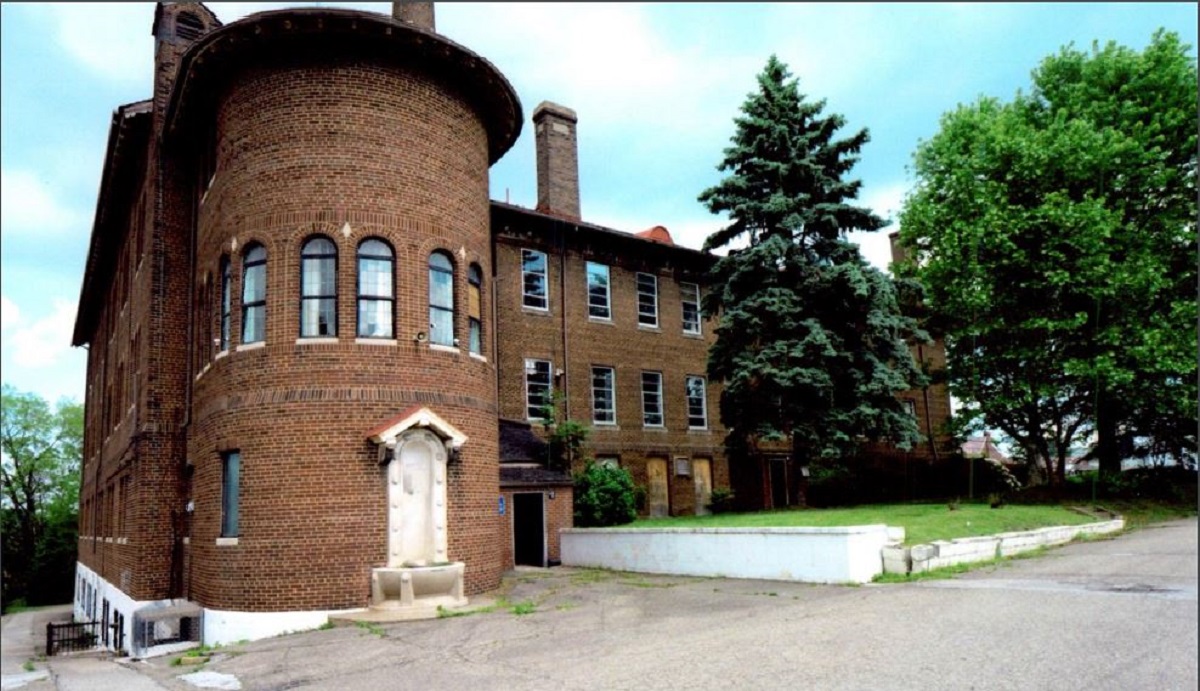
Leave a Reply